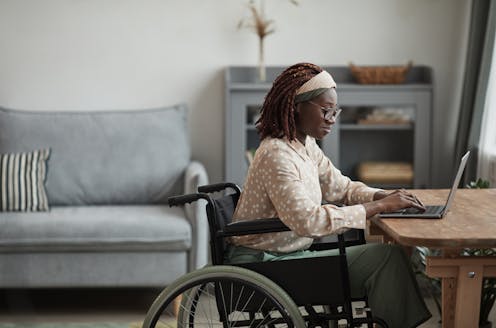
According to the World Health Organization, around 16 per cent of the world’s population, just over one billion people, are living with a disability. In Canada, research shows that up to 30 per cent of Canadians are living with a disability. That includes people with mental health conditions, mobility issues or visual and hearing loss. It also includes people who may not fall under traditional definitions of disability, such as those with auto-immune or other chronic conditions.
The reality is that most, if not all of us, will experience a disability at some point in our lives — whether individually or through providing support and care to a loved one.
Canada has set an ambitious goal to become a “barrier-free society by 2040.” But Canada’s governments have yet to implement a coherent strategy to achieve an inclusive society.
In a recent survey of 1,108 Canadians conducted for the CSA Group’s Public Policy Centre, 35 per cent of respondents self-identified as having a disability.
The survey used the more expansive definition of disability outlined in the Accessible Canada Act (ACA) which came into force in 2019. This definition includes “any physical, mental, intellectual, cognitive, learning, communication or sensory impairment” which can be “permanent, temporary or episodic in nature.”
Systemic challenges
Canada has policies in place to ensure equity, access and support for those living with a disability. This includes federal and provincial accessibility standards, income support programs and tax benefits, among others.
Yet, progress on inclusion remains elusive. Canadians with disabilities continue to have lower educational attainment and labour market participation than Canadians without disabilities. They are also more likely to live below the poverty line and experience homelessness. They continue to confront frequent discrimination and human rights violations.

Pervasive misconceptions about disabilities, flawed income support systems and inadequate enforcement of regulations are among the systemic challenges that contribute to this status quo.
Greater inclusivity needed
A fully inclusive society could generate an economic benefit of $337 billion — the equivalent of approximately 17 per cent of Canada’s GDP. Moreover, when systems are designed to accommodate those facing the most significant barriers, everyone benefits. Just think of a curb cut that makes streets accessible for wheelchair users. It also improves mobility for anyone using strollers, walkers, shopping carts or bikes.
For this future to become reality, the bar must be set much higher. Whether in the design of benefit programs or physical spaces, the level of support provided often falls far short of actual needs.
For example, social assistance programs for people with disabilities leave most recipients below the poverty line in every province. The forthcoming Canada Disability Benefit presents a significant opportunity to rectify decades of inadequate support, but as people with disabilities have warned, only careful design will ensure that thousands of people are indeed lifted out of poverty.
People must be meaningfully involved in making decisions that directly impact their well-being. Encouragingly, the “Nothing About Us Without Us” principle is being embedded in the federal government’s disability consultations and decision-making processes. However, more should be done to ensure policies are responsive to communities that are often overlooked, such as historically marginalized groups, including Indigenous Peoples.
A holistic approach
A new approach to disability must better reflect its multidimensional and evolving nature. Currently, assistance programs can be too difficult to access for those experiencing episodic or invisible disabilities.
In fact, 61 per cent of Canadians with disabilities experience conditions which worsen, improve or fluctuate over time. While there is no perfect definition of disability, the ACA’s more inclusive definition should be adopted more widely within federal and provincial disability policy and programs.

Finally, policymakers must become more attuned to how their decisions can either promote — or diminish — the potential of people with disabilities.
A more holistic approach could shift responsibility for disability inclusion into more central ministries. Nova Scotia, for example, placed its Accessibility Directorate in its Justice Department. This can help co-ordinate policymaking and also signal that disability inclusion is a key government priority.
The federal government and five provinces (Ontario, Manitoba, Nova Scotia, British Columbia and Newfoundland and Labrador) are in various stages of developing and implementing legislation around accessibility in employment, education and transportation. Some local variance will always be needed, however, governments should work closely to share best practices and encourage faster implementation.
Becoming a barrier-free society by 2040 will require tremendous efforts by our governments and partners in the private and non-profit sectors. A new approach is needed to maximize our chances of getting there: One that centres people and their rights and reflects the different ways people experience disabilities.
Sunil Johal is the Vice-President, Public Policy with the CSA Group. He is also currently a member of the Expert Panel on Portable Benefits providing advice to the Ontario government on the design and implementation of a portable benefits program.
This article was originally published on The Conversation. Read the original article.







